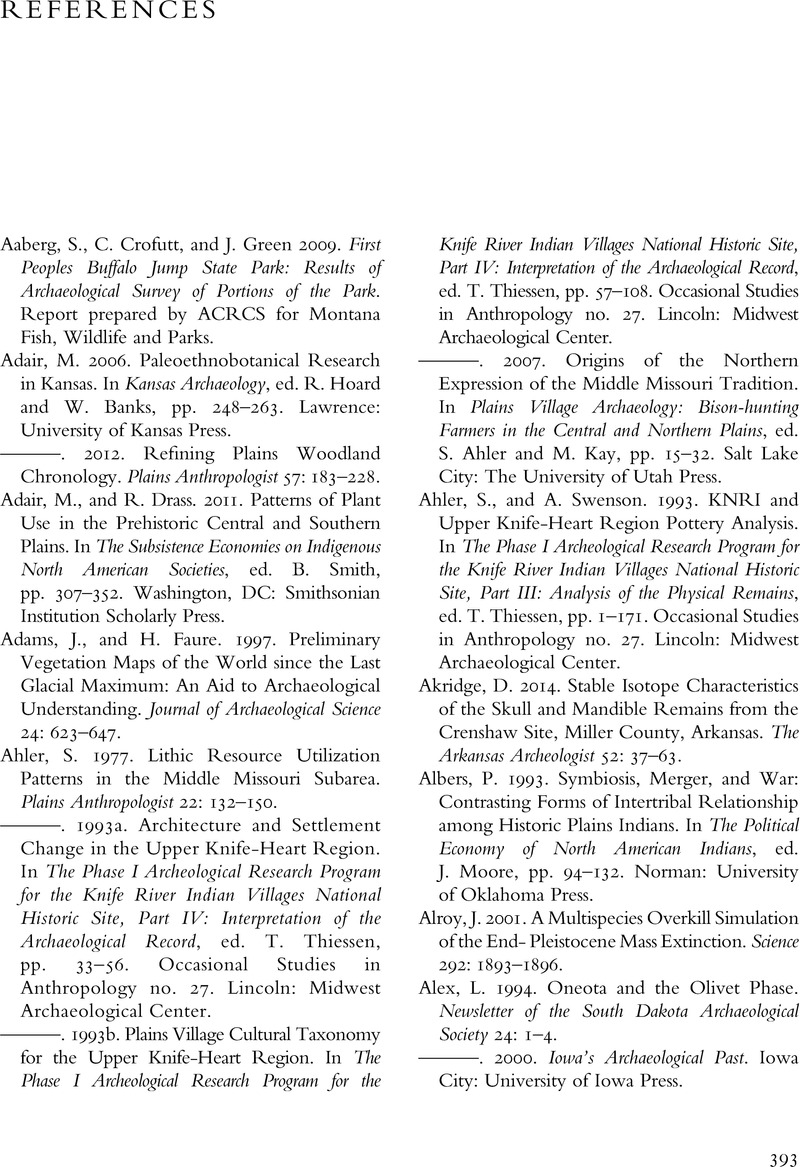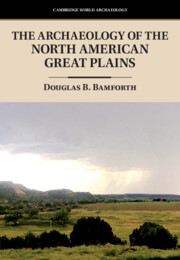Book contents
- The Archaeology of the North American Great Plains
- Cambridge World Archaeology
- The Archaeology of the North American Great Plains
- Copyright page
- Dedication
- Contents
- Figures
- Tables
- Acknowledgments
- Chapter 1 Introduction
- Chapter 2 Where and What Are the Great Plains?
- Chapter 3 Peopling the Continent, Peopling the Plains:
- Chapter 4 Paleoindian Hunters (and Gatherers):
- Chapter 5 Diversity, Environmental Change, and External Connection:
- Chapter 6 Mounds, Pots, Pipes, and Bison:
- Chapter 7 The Context of Maize Farming on the Great Plains
- Chapter 8 Settled Farmers and Their Neighbors, Part 1:
- Chapter 9 Settled Farmers and Their Neighbors Continued:
- Chapter 10 The Plains Village Period, Part 3:
- Chapter 11 One Promise Kept:
- Chapter 12 Afterword
- References
- Index
- References
References
Published online by Cambridge University Press: 19 November 2021
- The Archaeology of the North American Great Plains
- Cambridge World Archaeology
- The Archaeology of the North American Great Plains
- Copyright page
- Dedication
- Contents
- Figures
- Tables
- Acknowledgments
- Chapter 1 Introduction
- Chapter 2 Where and What Are the Great Plains?
- Chapter 3 Peopling the Continent, Peopling the Plains:
- Chapter 4 Paleoindian Hunters (and Gatherers):
- Chapter 5 Diversity, Environmental Change, and External Connection:
- Chapter 6 Mounds, Pots, Pipes, and Bison:
- Chapter 7 The Context of Maize Farming on the Great Plains
- Chapter 8 Settled Farmers and Their Neighbors, Part 1:
- Chapter 9 Settled Farmers and Their Neighbors Continued:
- Chapter 10 The Plains Village Period, Part 3:
- Chapter 11 One Promise Kept:
- Chapter 12 Afterword
- References
- Index
- References
Summary

- Type
- Chapter
- Information
- The Archaeology of the North American Great Plains , pp. 393 - 434Publisher: Cambridge University PressPrint publication year: 2021



